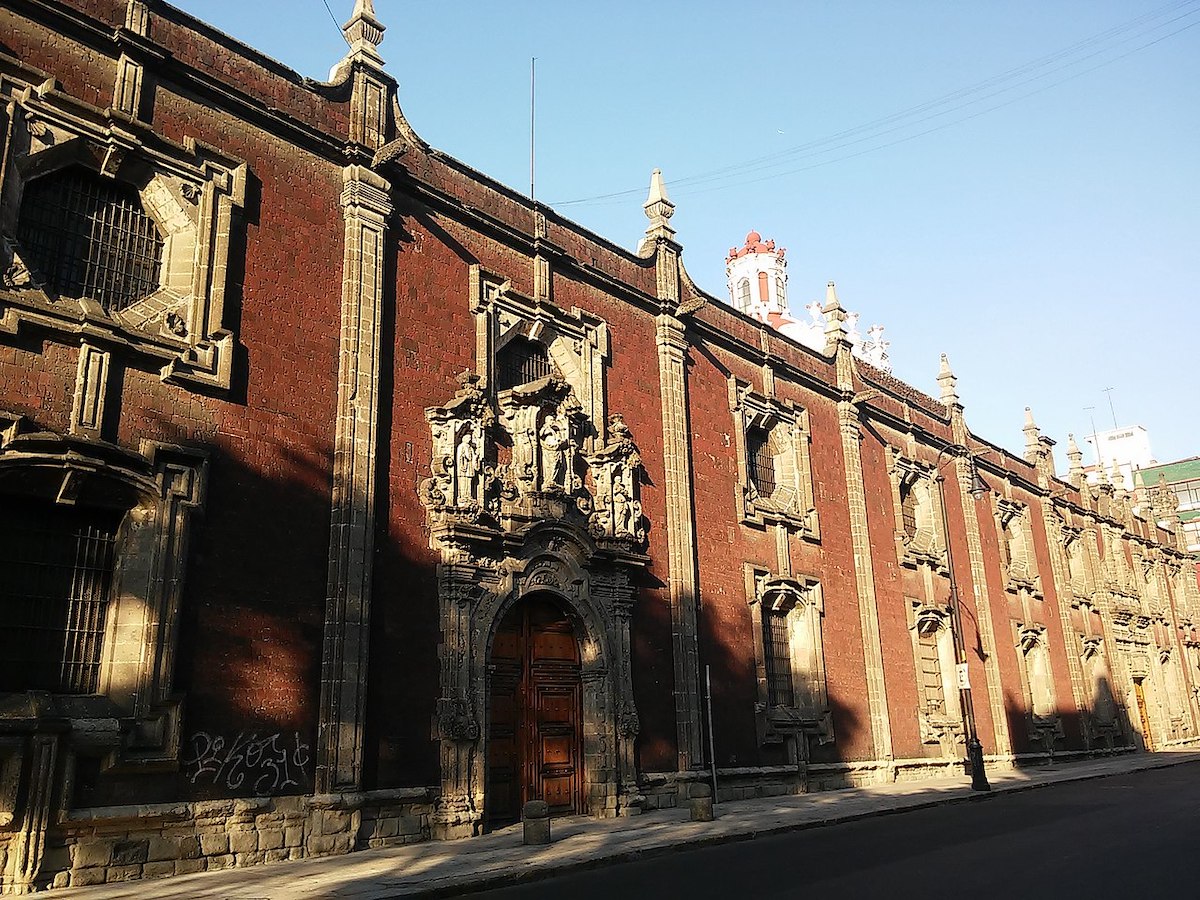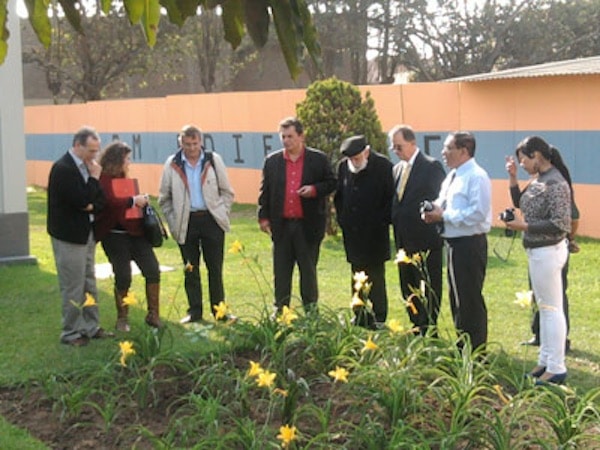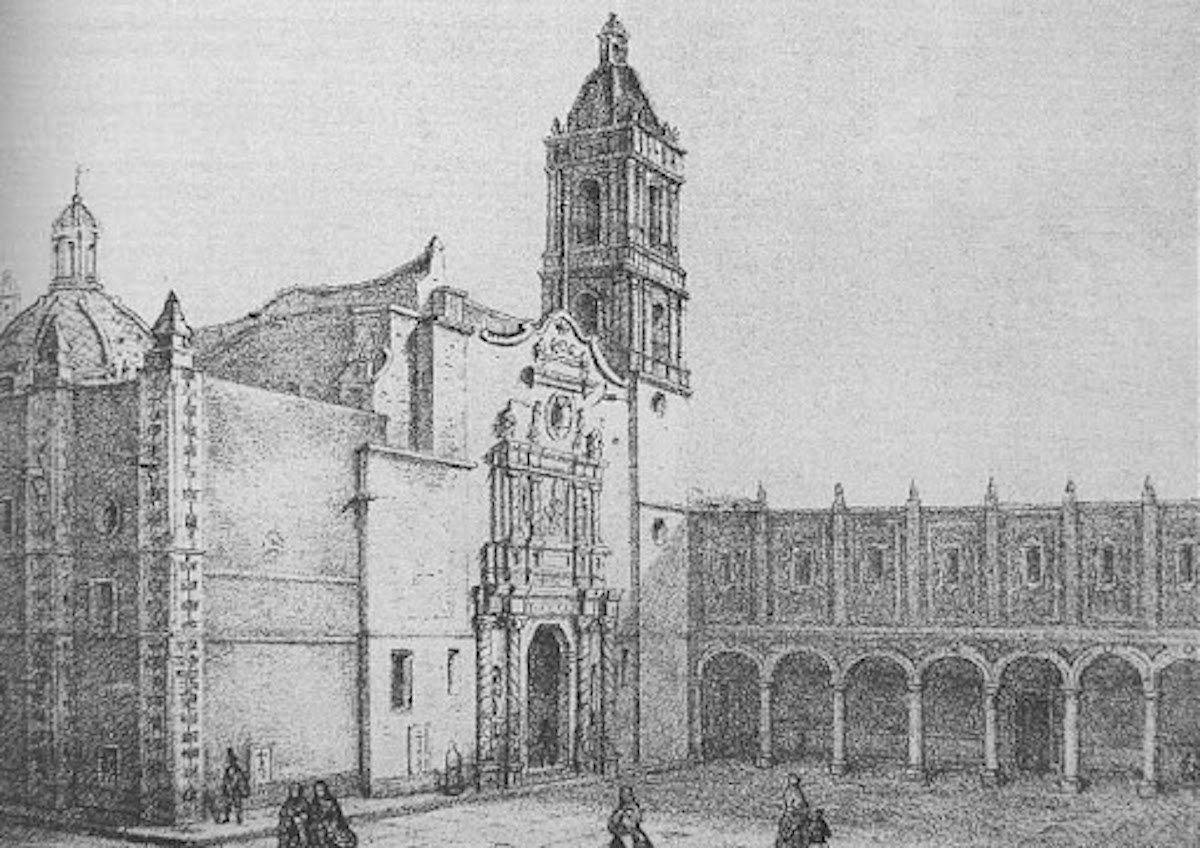On this day in 1681, the notary act that created the legal entity of the Brotherhood of Our Lady of Aránzazu of Mexico City was signed; it would later turn into a guild.
Our regular readers will well know this blog’s interest in this organizational model. The brotherhoods and guilds that were created by the “members of the Basque nation” (that is, those from Alava, Biscay, Gipuzkoa, and Navarre) who lived in the New World colonies (and the Philippines) had a clear goal: to tend to the spiritual and material needs of their compatriots who lived or arrived in their area of action and influence.
A Basque network in the Americas
But their activity went far beyond just the local area. They created a network, supported by all these institutions, to provide coverage to compatriots who, for professional or business reasons, or simply out of need, had to travel throughout the New World. This mutual support and aid network was also connected with Basque groups in the Court and in the Basque Country itself. It thereby became a magnificent representation of the collaborative and group mentality, and one of the reasons that explains the extraordinary success of such a small group as the Basques in the Americas.
It could even be said that it was in these colonies where the southern Basques (and the northern Basques camouflaged among them) felt, for the first time, that they belonged to a different community, recognizing each other as equals.
Of all those that were created, a sort of “backbone” for this structure was made up of three leading ones: the ones in Lima, Mexico City, and Santiago de Chile.
We’ve spoken of the first of them on many occasions: the Brotherhood of Our Lady of Aránzazu of Lima (1612). We’ve spoken of it and with it, we have had, for a while now, a kind of “strategic agreement” that extends to the Basque Center that arose from it, the Limako Arantzazu Euzko Etxea.
The Guild of Aránzazu of Mexico City and the mark that is still felt today
But this entry is about the one in Mexico City, because today marks the 340th anniversary of its official birth. The decision to create it had been taken a few months prior, on April 4, 1681.
Of all the guilds and brotherhoods, the one in Mexico City is the one which as left a mark that is still alive today in its adopted homeland. We’re referring to the Colegio de San Ignacio de Loyola – Vizcaínas which we have also spoken of on many occasions.
This Guild, upon pushing to open this school in 1732, set in motion an institution that is now a role model, becoming one of the most evident and important legacies of the great social work the Basques carried out in the Americas for centuries.
Those Basques in Mexico City, by creating this institution, proved their extraordinary vision and sensitivity. That, joined with an impeccable, leading legal and organization structure that was created to manage it, has allowed this educational center to survive all the whims of history and to continue to be, even in the 21st century, a thriving reality.


Also, it just so happens that, next year, in 2022, the 290th anniversary of the 1732 decision by the members of the Guild to set this project in motion will be commemorated. The project took a few years to see the light, and not because its backers were negligent: it was because of the many objections put up by the ecclesiastical institutions of Mexico City, who pushed back against a school that was not under their control or supervision. This meant that it wouldn’t be until 1767 that the school’s doors would open.
That decision to create a foundation that worked autonomously, the one which created the initial difficulties, and caused the project’s backers so many headaches, was the one that guaranteed its survival: making sure the school was out of civil and ecclesiastical control has guaranteed its survival.
The elements of our homage
In order to celebrate this great day, the Asociación Euskadi Munduan (which runs this blog), the Limako Arantzazu Euzko Etxea, the Hermandad de Nuestra Señora de Aránzazu de Lima, and the Editorial Archives of Revista Oiga have set in motion a project that joins them many others we’ve been developing around the bicentennial of the independence of the New World republics.
And we start today, with the anniversary of the Guild of Our Lady of Aránzazu of Mexico City, and will continue to bring new entries over the next few months.
In this first entry, we’re going to share three videos we believe are of great value.
Today, both its Historical Archives, directed by Dr. Ana Rita Valero, and the Museum of the Vizcaínas, directed by Dr. Lizzeth Armenta, keep the memory of the legacy of these Basques alive and well.
Greetings from Chile
One of them comes from the Euzko Etxea de Santiago de Chile: greetings from its president to the Basques of Mexico City, and a video of their chorus singing “Agur Jaunak”, as a kind of respectful greeting.
As we’ve spoken of on more occasions, there is a strong link between this Basque Center and the one in Lima. They participated, very actively, in the events celebrating the 400th anniversary of the birth of the Brotherhood of Our Lady of Aránzazu of Lima, doing so not only with their support, but also by lending them elements of great importance and symbolism: a sapling of the oak that is the Tree of Guernica, which was planted in Lima, and the ikurriña that flew over all the commemorative events, alongside the flag of Peru.


Because of all of this, we thought it necessary that they had a leading role in this greeting and homage to the Basques of Mexico City. Moreover, we thought it was necessary to revive this Santiago—Lima—Mexico City (or vice-versa) axis, so that it can again become the backbone of a thriving network of Basques in the Americas.
Our contribution from the Basque Country and from Lima
And those of us in the Basque Country and in Lima have prepared a video in which we present a recording of a melody that had been hidden in the cloak of Our Lady of Guadalupe, recorded at the feet of Our Lady of Arantzazu at the sanctuary itself in Gipuzkoa. The song is played by the harpist at the Bilbao Symphony Orchestra, Marion Desjacques.
In this video, we also present the relationships between both orders of the Virgin and the importance they both have for the Basques of Mexico City.
We would also like to thank the kindness of the Franciscan Community of Aranzazu, who were wonderfully accommodating when this video was recorded, on May 29 of this year, and which was mentioned by journalist Maite Redondo in the newspapers of the Noticias Group.
(English subtitles available)
A story that must be known
And we finish practically where we began, recalling the importance that we believe the history of these Basque brotherhoods and guilds in the Americas have. That’s why, over the next few months, here on the blog, we’ll be bringing you a series of articles and thoughts about them, which are part of the publication, celebrating the 400th anniversary of its founding, which was printed by the Brotherhood of Our Lady of Aránzazu of Lima, wherein experts on the matter analyze this extraordinary history of the Basques.
To this compilation, we’ll also be adding others focused on Mexico City, both about the Guild the Basques created there, and its main and longest-lasting work, the Colegio de las Vizcaínas.
The history of the Basques in the Americas is a thrilling one, one which has left a lasting, indelible mark that can be felt even to this day.
Header photo: Atrium of the Convent of St. Francis, Mexico City, where the chapel of the Guild of Our Lady of Aránzazu of Mexico City was located
Last Updated on Sep 29, 2024 by About Basque Country





























